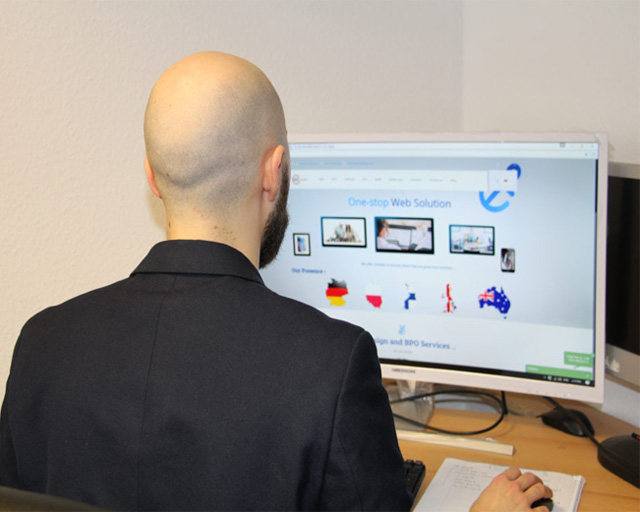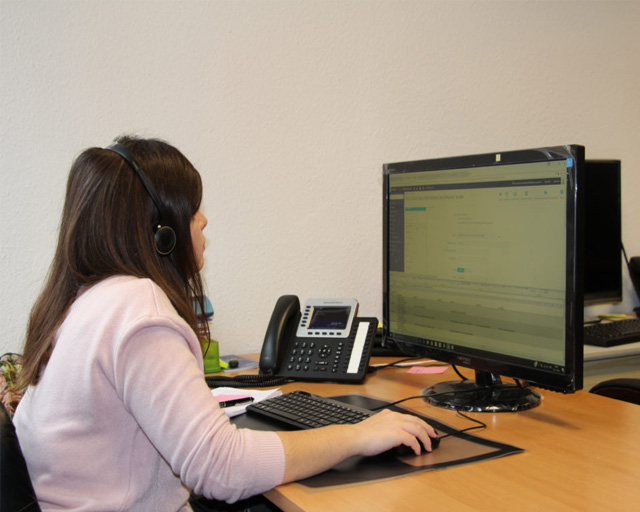
Interactive Voice Response in Call Center
March 10, 2017
Computer Assisted Web Interviewing (CAWI)
April 10, 2017Computer Assisted Telephone Interviewing (CATI)
Web resolution has drastically changed the market research increasing the number of options compared to the previous research technologies. Technology has changed the rules and caused several and significant modifications of survey techniques. One of the most common research methodology is Computer Assisted Telephone Interviewing (CATI).CATI methodology was created to improve and facilitate the telephone survey process. CATI includes a software that automatically helps and leads the interviewer during the survey and, consequently, during data collection. There are questions which are displayed on the computer and are followed by possible answers that every respondent might give.

1. Computer Assisted Telephone Interviewing – process steps – CATI
The interviewers sit in front of a computer, in which they are supposed to input the survey data. Upon command, the computer dials the telephone number to be called and when the contact is linked, the interviewer reads the question posed on the computer screen and notes the respondent´s answers directly into the computer. The fact that interim and update reports can be compiled instantaneously as the data are being collected is very helpful for the interviewer; moreover, CATI software has built-in logic, which also enhances data accuracy. For example, the CATI program will personalize questions and control for logically incorrect answers, such as the answers percentage that do not add up to 100 percent. In addition, the CATI software has a built-in branching logic which will skip questions that are not applicable or will probe for more detail when warranted.
2. Advantages of Computer Assisted Telephone Interviewing methodology
Interviews carried out by telephone are guided by a questionnaire displayed on the computer screen. The interviewer records answers using the keyboard to correspond with the pre-coded responses displayed on the screen.
Every questionnaire method, like CATI, is a double-edged sword.
Some advantages are:
- High quality of collected data: you avoid any interview misinterpretation or incorrect question administering;
- Time reduction: callback is automatically managed by the CATI system. The interviewer can also directly insert the data with no use of paper;
- More accuracy: being a questionnaire displayed on a computer and completely automated means that there is no room for mistakes or unclear compiling;
- Complete control on interviewer’s progress: a recap allows to check in real time how many interviewers are completed and how many are incomplete or dropped.
If your research projects need a personal touch, a customer advocate or the guidance of an experienced research, Thakur International, Nepal is the right choice. Our professional team can tackle any CATI research project.
CATI helps us to work hard in order to reach target audiences, that maybe will not be engaged with online surveys. Furthermore, CATI can serve to supplement online or mobile researches to ensure representative sampling and faster turnaround times on completed research. You can trust your CATI project by Thakur International (Nepal) because we:
- Pioneered random sampling phone methodologies, which are considered the gold standard;
- Offer the largest interviewing team in industry;
- Monitor all agents live and remotely for quality;
- Use predictive dialing technology and proprietary manual dialing systems;
- Maintain the state-of-the-art security and protocols;
Thakur International CATI research is faithfully executed according to methodology every time, with interviewers, project managers and researchers ensuring efficiency, quality control and results you can trust.
3. Disadvantages of CATI methodology
There are some disadvantages of CATI research. Getting a questionnaire set up and running, fault free, on a CATI system, takes time. Coping with open-ended responses presents some problems on CATI because, although the system can accommodate open-ended comments, capturing them requires interviewers to have good typing skills. If a respondent makes changes to an earlier answer when part way through the interview, it is more difficult to go back and make alterations, like with the paper questionnaires. There are also other disadvantages such as:
- Biased against households without telephones, unlisted numbers
- Difficult to administer questionnaires on sensitive or complex topics
- Lack of visual materials
- Limited open-end question or time constraints due to more limited survey length

